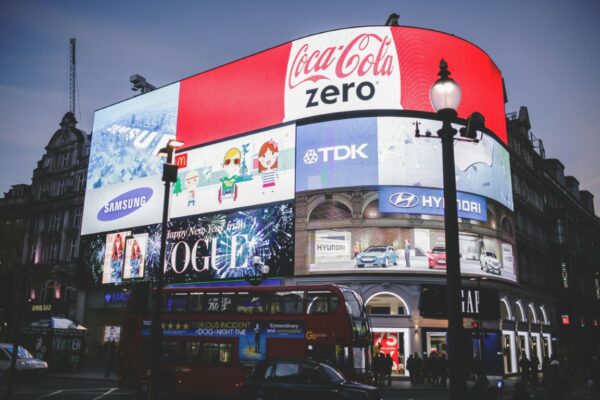As we look ahead to 2025, the economic crystal ball remains cloudy. Whispers of significant policy shifts, notably President Trump’s proposed tariffs, combined with ongoing stock market volatility fueled by inflation concerns, interest rate hikes, and geopolitical instability, create a complex environment for businesses. For those of us in the paid media advertising world – managing campaigns across Google Search, Display, YouTube, Streaming TV, and Programmatic channels – understanding these potential headwinds is not just prudent, it’s essential for strategic planning and sustained client success.
The question on many marketers’ minds is: how will these macroeconomic factors ripple through the advertising ecosystem in 2025? While uncertainty is the watchword, we can analyze current trends, economic projections, and historical precedents to map out potential scenarios and prepare accordingly.
The Economic Backdrop: Tariffs and Volatility
Two major forces are converging that could significantly impact business investment and consumer spending, the lifeblood of advertising:
- Proposed Tariffs: President Trump has floated proposals for significant new tariffs, including a potential 10% universal baseline tariff on all imports and potentially much higher rates (60% or more) on goods from specific countries like China.
- Potential Impact: Economists across the spectrum have warned such broad tariffs could act as a tax on consumers, increasing the cost of imported goods significantly. This could further fuel inflation, reduce consumer purchasing power, and potentially trigger retaliatory tariffs from other countries, disrupting global supply chains. A recent analysis by the Center for American Progress suggests a 10% universal tariff could cost the average American family around $5,200 per year. Businesses relying on imported goods or components would face higher costs, potentially leading to squeezed margins, hiring freezes, or reduced investment – including marketing budgets. Sectors like electronics, apparel, automotive, and retail could be particularly exposed.
- Market Volatility and Economic Uncertainty: Recent years have seen significant stock market fluctuations. While markets have shown resilience at times, underlying concerns about persistent inflation, the trajectory of interest rates set by the Federal Reserve, global conflicts, and the possibility of an economic slowdown or recession continue to create anxiety.
- Potential Impact: Market volatility often reflects (and influences) broader economic sentiment. When businesses feel uncertain about future demand or financing costs, they tend to become more cautious with spending. Similarly, when consumers see their investments fluctuate or hear recession warnings, they may pull back on discretionary purchases. News outlets frequently report on shifting consumer confidence indices, which directly correlate with willingness to spend. This caution translates directly to advertising, as marketing budgets are often among the first reviewed during times of economic pressure.
Ripple Effects Across the Advertising Landscape in 2025
 Given this economic backdrop, how might the advertising industry, particularly digital channels, react in 2025?
Given this economic backdrop, how might the advertising industry, particularly digital channels, react in 2025?
- Overall Ad Spend Growth Moderation: While digital advertising has enjoyed robust growth, a significant economic downturn spurred by tariffs or sustained volatility could lead to a slowdown or even contraction in overall ad spend. Major forecast groups like Magna, GroupM, or eMarketer typically project growth, but these forecasts often carry caveats about macroeconomic conditions. Expect revisions to 2025 forecasts when new tariff policies are enacted or market instability deepens.
- Flight to Performance and Measurability: In uncertain times, there’s a natural gravitation towards marketing activities with clear, measurable ROI. Channels perceived as directly driving sales or leads often gain favor over those focused primarily on upper-funnel brand awareness.
- Google Paid Search: Likely to remain resilient, potentially even growing in importance. Its intent-driven nature allows businesses to capture demand precisely when users are actively looking for products or services. Expect increased focus on conversion tracking, optimizing for bottom-of-funnel keywords, and demonstrating direct return on ad spend (ROAS). Cost-per-clicks (CPCs) could become more competitive in high-performing sectors as advertisers battle for immediate results, while potentially softening in sectors heavily impacted by tariffs or spending cuts.
- Programmatic Display: This could be a mixed bag. While broad awareness campaigns via Display might face budget cuts, Programmatic’s strength lies in data-driven targeting and efficiency. Advertisers may lean more heavily on programmatic capabilities to reach specific, high-value audiences with precision, minimizing waste. The focus will shift intensely towards performance KPIs (conversions, cost-per-acquisition) rather than just reach or impressions. Retargeting strategies might also see increased emphasis to maximize conversions from existing site visitors.
- Scrutiny on Video and Streaming: YouTube and Connected TV (CTV)/Streaming advertising have boomed, capturing eyeballs shifting from linear TV. However, these channels often blend branding and performance objectives.
- YouTube: Its diverse ad formats allow for both broad reach and direct response (e.g., Video Action Campaigns). Expect advertisers to lean into YouTube’s performance-oriented solutions, demanding clearer attribution and ROI metrics. The platform’s vast reach remains appealing, but budgets might be allocated more cautiously towards campaigns proven to drive conversions.
- Streaming/CTV: While CTV adoption continues to grow, offering valuable reach to cord-cutters, its measurement capabilities are still evolving compared to search or social. In a tougher economic climate, advertisers will demand greater transparency and proof of performance from their CTV investments. Budgets might shift towards platforms offering more granular targeting and conversion tracking, or there could be pressure to demonstrate how CTV spend contributes to lower-funnel results. We might see a greater push for interactive or shoppable ad formats within these platforms.
- Emphasis on Efficiency and Optimization: Regardless of the channel, 2025 will likely demand ruthless efficiency. This means:
- Tighter Audience Targeting: Leveraging first-party data and sophisticated audience segmentation to reach the most relevant consumers.
- Creative Optimization: Continuously testing ad copy, visuals, and calls-to-action to maximize engagement and conversion rates. Messaging may need to shift towards value, durability, or necessity depending on consumer sentiment.
- Budget Agility: Being prepared to shift budgets quickly between channels or campaigns based on real-time performance data and changing market conditions.
- Focus on Customer Retention: Acquiring new customers is often more expensive than retaining existing ones. Expect increased focus on using advertising for loyalty programs, upselling, and cross-selling to the current customer base.
Strategic Considerations for Advertisers
Navigating 2025 successfully will require a proactive and adaptable approach:
- Scenario Planning: Don’t wait for changes to happen. Model potential impacts of tariffs or economic slowdowns on your specific business and industry. What happens to your margins? Your customer demand? Your ad budget elasticity?
- Double Down on Data: Ensure your analytics and attribution models are robust. You need to understand clearly which channels and campaigns are driving results and why. This is non-negotiable when justifying ad spend.
- Prioritize Flexibility: Build flexibility into your media plans and agency relationships. Avoid overly long commitments if possible, and be ready to pivot strategy or reallocate budgets as needed.
- Communicate Value: If consumer budgets tighten, your advertising needs to clearly communicate the value proposition of your product or service. Why is it essential? How does it solve a problem or offer superior value?
- Don’t Panic, Prepare: While potential challenges exist, downturns often create opportunities for well-prepared businesses to gain market share. Strategic, efficient advertising can be a powerful lever even – perhaps especially – in tougher economic times. Maintaining a visible presence, even if budgets are adjusted, keeps your brand top-of-mind for when consumers are ready to spend.
Conclusion
The intersection of Trump-era tariffs and ongoing market volatility presents a significant variable for the 2025 advertising landscape. While the precise impacts remain uncertain, the likely consequences point towards increased costs for businesses and consumers, heightened economic anxiety, and consequently, greater scrutiny on advertising budgets.
For businesses relying on Google Search, Display, YouTube, Streaming, and Programmatic advertising, the path forward involves embracing efficiency, prioritizing measurable performance, and maintaining strategic flexibility. Channels like Paid Search may prove resilient due to their direct-response nature, while others like Display and Streaming will face increased pressure to demonstrate tangible ROI.
Ultimately, navigating these potential headwinds in 2025 requires a data-driven, agile, and strategic approach. By understanding the potential shifts and preparing proactively, advertisers can continue to leverage the power of paid media to drive growth, even amidst economic uncertainty. Partnering with an agency experienced in optimizing across these diverse digital channels and adapting to market dynamics will be more critical than ever.



